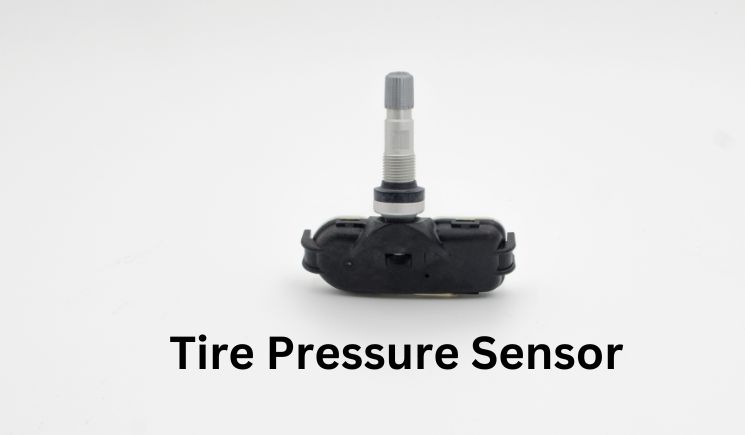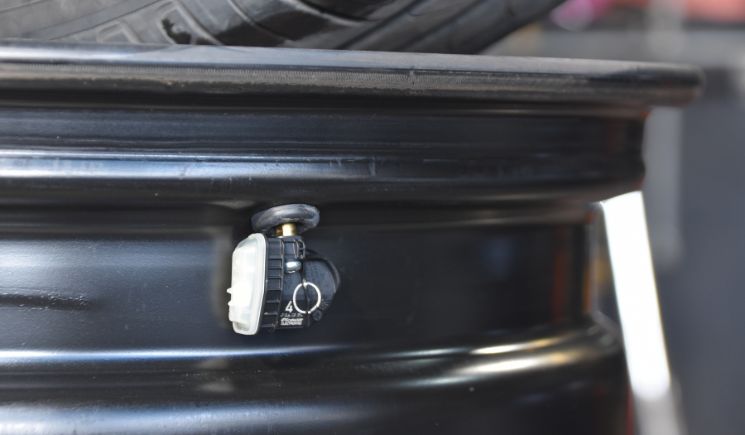How To Bypass Tire Pressure Sensor

Ah, the days of having to manually check tire pressure with a trusty tire gauge are gone. Nowadays, sensors in our vehicle’s tires can tell us when we need to top off the air.
But what if you want to bypass this modern convenience? Fear not, for I’m here as your automotive technician guide! With just a few simple steps, you’ll be able to remove those pesky tire pressure sensors and get back on the road without any hiccups.
So grab your tools, roll up your sleeves, and let’s get started – it’s time to take control of your ride!
Table of Contents
- What Is A Tire Pressure Sensor?
- Identifying The Tire Pressure Sensor
- Gather The Necessary Tools
- Disconnect The Tire Pressure Sensor
- Test The Tire Pressure Sensor
- Frequently Asked Questions
- Conclusion
What Is A Tire Pressure Sensor?
Tire pressure sensors are electronic components that measure and monitor the air pressure of a vehicle’s tires. A technician needs to understand how these devices work in order to properly assess any issues with tire pressure.
On most vehicles, the tire pressure sensor is mounted on the wheel hub or inside the valve stem. It reads data from an onboard computer which then communicates with the driver through a warning light or message system.
The amount of air in each tire must be kept at optimal levels for safe driving and fuel efficiency. The tire pressure sensor ensures that this happens by sending real-time information about current pressures to the driver via an onboard display.
If one or more tires falls below its recommended level, it will trigger a warning signal so that the issue can be addressed right away. If something appears to be wrong with your car’s tire pressure monitoring system, it’s important to identify what type of sensor you have installed before attempting repairs or replacements. Doing so will ensure you get accurate readings and make sure your vehicle remains up to spec.
Identifying The Tire Pressure Sensor

Tire pressure sensors are a vital component of the modern vehicle. Not only do they help drivers stay on top of their tire pressure, but they also alert them to any potential issues that may arise throughout their travels.
It’s important to identify the right sensor for your car in order to properly maintain it and avoid costly repairs down the road.
To find the correct tire pressure sensor for your vehicle, you’ll need to consult your owner’s manual or look up information online. You should be able to determine which type is necessary based on its size, shape, location, and other specifications. Make sure you match it exactly so that it functions optimally with your car’s system.
Additionally, most cars have an onboard diagnostics system (OBD) port where the OBD-II scanner can be plugged in for further testing and troubleshooting if needed.
Once you’ve identified the proper tire pressure sensor for your car, you’ll need to gather all the necessary tools and materials needed for installation. This includes wrenches, sockets ratchets, screwdrivers as well as replacement parts like new tires or valve stems depending on what kind of repair work needs to be done.
Having these items ready will make the job much easier and faster when it comes time to replace or install a new tire pressure sensor onto your vehicle. With everything in place, you’re now ready to begin working on getting your tires back into optimal condition!
Gather The Necessary Tools
Before you can start bypassing the tire pressure sensor, it’s important to gather the right tools. Here’s what you’ll need:
- Digital multimeter
- Screwdriver set with Torx and Phillips head bits
- Socket wrench set
- Tire valve stem core remover tool
- Soldering iron
Having all these tools on hand will make the job easier and more efficient for sure. Plus, having a good selection of quality tools is always handy when it comes to automotive work.
Once that’s taken care of, we’re ready to move onto disconnecting the tire pressure sensor.
Disconnect The Tire Pressure Sensor
After gathering all of the necessary tools, disconnecting the tire pressure sensor is a critical step in bypassing it. It can be compared to opening a door to venture into an unknown room: you must take care and have patience as there are many things that could go wrong if done incorrectly.
To begin, turn off your car’s ignition and ensure that no power sources are connected to the tire pressure sensor. Then locate the right size socket wrench for removing the nut attached to the tire valve stem on each wheel–often times this will require different types of sockets depending on the make and model of the vehicle.
Once all nuts are removed, carefully remove the tires from their respective rims using a pry bar or other lever tool.
Carefully inspect each tire’s sidewall for any cracks or damage before attempting to replace them with new ones, as they may cause air leaks later down the line. After ensuring all tires are safe, it’s time to proceed with disconnecting the tire pressure sensor itself.
Using needle-nose pliers or specialty removal tools designed specifically for tire sensors, pinch and twist one end at a time until both ends have been disconnected from each wheel. Be sure not hold onto either side too tightly; otherwise, you might snap off important connections within the unit resulting in permanent damage.
With all four wheels now free from their respective sensors, you’re ready move onto testing them out and replacing them if need be.
Test The Tire Pressure Sensor
The tire pressure sensor is an important safety feature and should be tested regularly.
To test the sensor, start by checking all four tires for proper inflation levels before proceeding with testing.
Make sure to replace worn or damaged tires before continuing.
Once you have ensured that the tires are properly inflated, use a tire pressure monitor tool to check if the system detects any low-pressure readings from each individual wheel.
If there are no abnormal readings detected, then the sensor is working correctly.
However, if it does detect an abnormality, you may need to reset the system in order to get it functioning normally again.
To reset the system, disconnect the vehicle battery cables and wait 15 minutes before reconnecting them.
This will cause all warning lights associated with tire pressure systems to turn off when starting up your car again.
After doing this process, re-check your tire pressures using a gauge and make sure they are still within manufacturer specifications before driving your vehicle once more.
Frequently Asked Questions
Is Bypassing A Tire Pressure Sensor Legal?
Whether or not bypassing a tire pressure sensor is legal really depends on your location.
In some areas, it may be completely illegal and could result in fines if you are caught, while other places might allow for exceptions depending on the case.
As an automotive technician, I always recommend double-checking with local laws before attempting to bypass any sensors – after all, safety should always come first!
How Long Does It Take To Bypass A Tire Pressure Sensor?
Bypassing a tire pressure sensor typically takes around an hour. It depends on the model of car you have and what tools are available to you, but it’s usually a relatively straightforward process that most automotive technicians can manage in under sixty minutes.
The first step is usually disconnecting power to the TPMS module – after that, it’s just a matter of following your vehicle manufacturer’s instructions for how to bypass their particular sensor.
Are There Any Risks Associated With Bypassing A Tire Pressure Sensor?
Many motorists are unaware that bypassing a tire pressure sensor can be dangerous.
In fact, research shows that up to 88% of all car accidents involving improper tire maintenance are caused by an unmonitored tire pressure sensor.
As an automotive technician, it’s important to remind drivers that when they choose to bypass their vehicle’s tire pressure sensors, they’re not only risking the life of themselves and others on the road but also putting their vehicle at risk of serious damage due to incorrect air pressures in tires.
Are There Any Alternatives To Bypassing A Tire Pressure Sensor?
Bypassing a tire pressure sensor is not the only option when it comes to dealing with faulty sensors. In fact, there are several other alternatives available.
You could replace the entire TPMS system or individual components such as the transmitter/sensor and valve stems if they’re worn or damaged.
Additionally, you can reset your car’s computer so that it no longer looks for an input from the TPMS system. This will effectively bypass the sensor without actually removing it completely.
As an experienced automotive technician, I’d recommend exploring these options before deciding to bypass the sensor altogether.
Conclusion
It’s important to understand that bypassing a tire pressure sensor is not always the best option. With the increased cost and potential legal repercussions, it may make more sense to look into alternatives like resetting the system or replacing faulty parts.
That being said, if you choose to go ahead with bypassing your tire pressure sensors, it shouldn’t take longer than an hour for a skilled auto technician–with the right tools–to get the job done. Plus, research indicates that most drivers feel a notable improvement in their vehicle’s performance after doing so.
If you’re still unsure about taking this course of action, be sure to consult an experienced automotive technician who can help answer any questions you have before making a decision.






